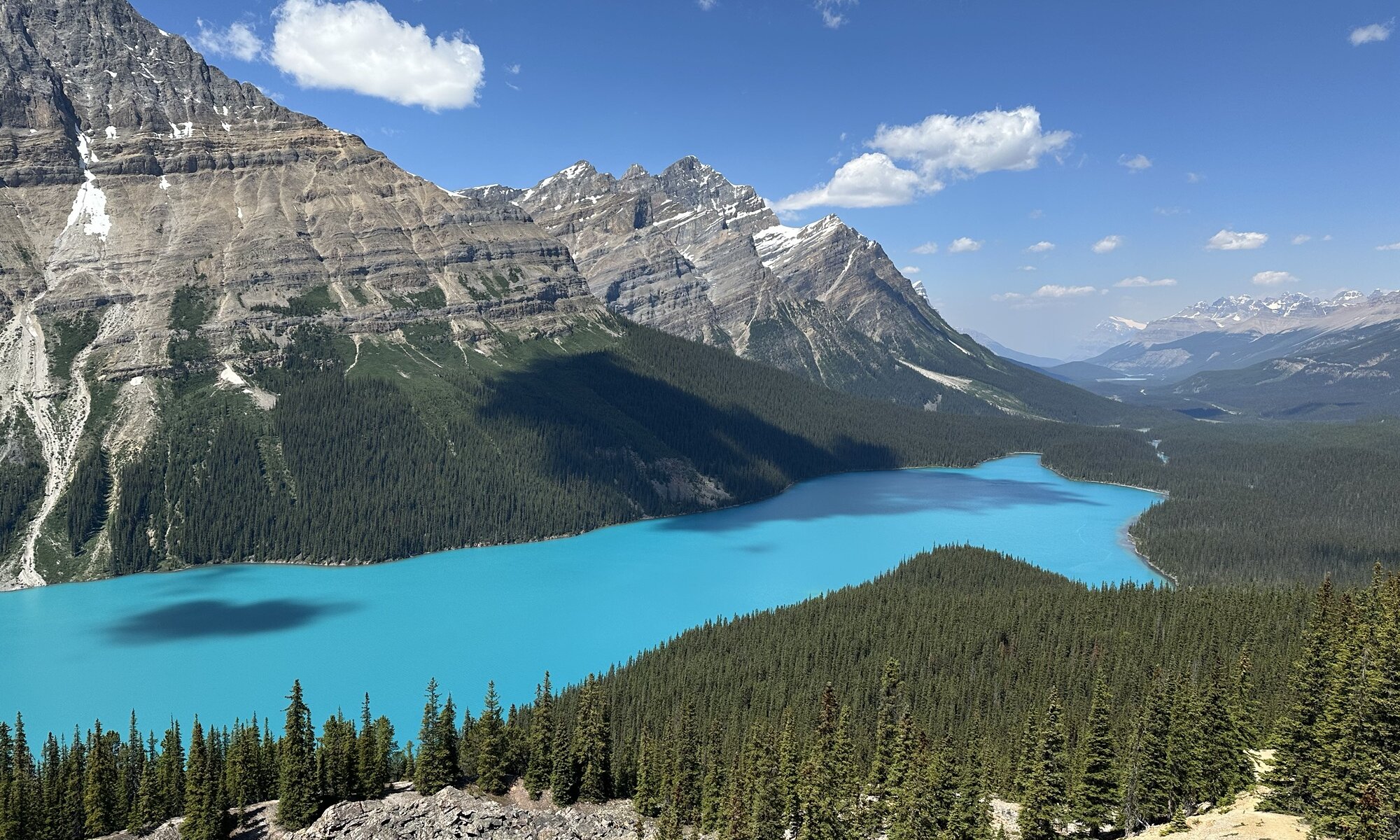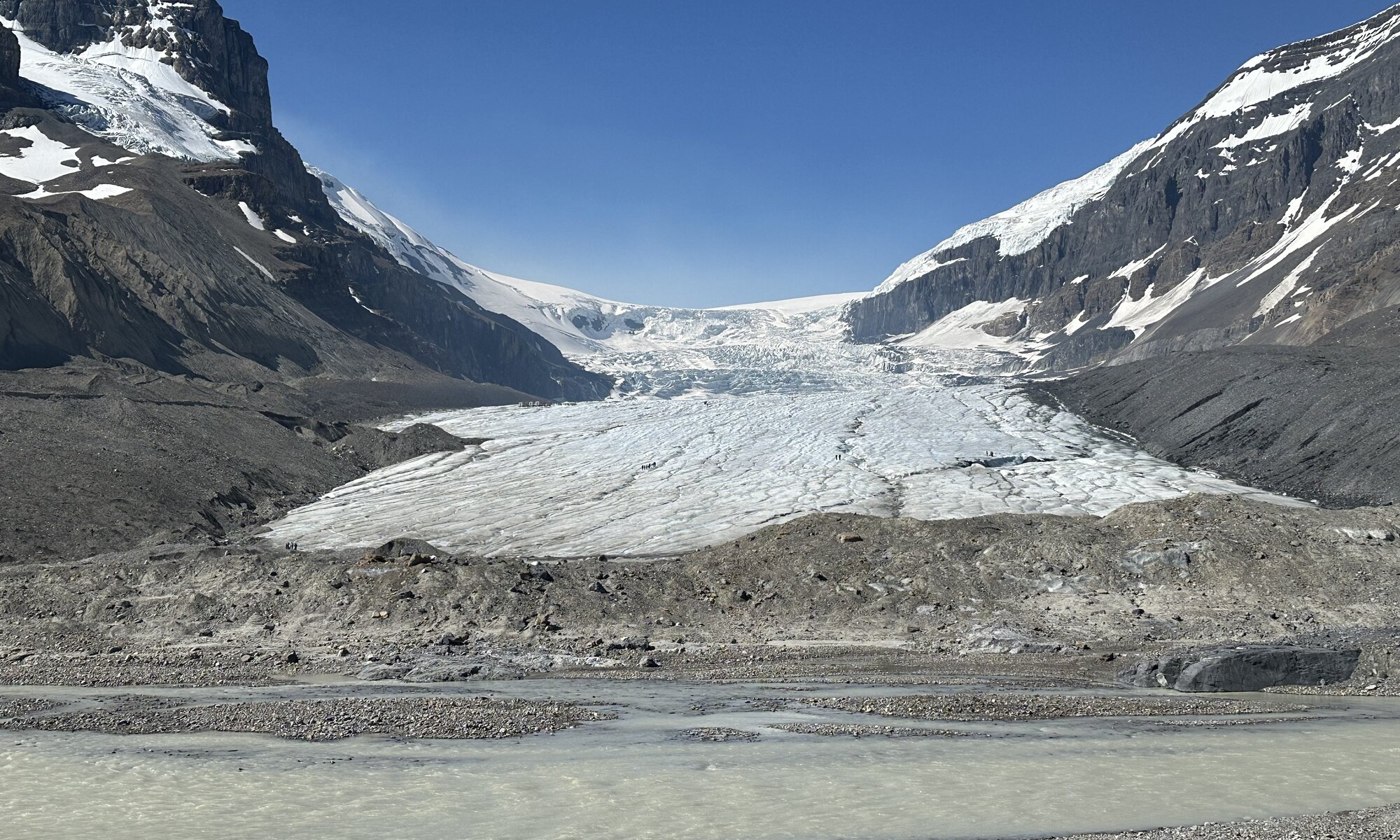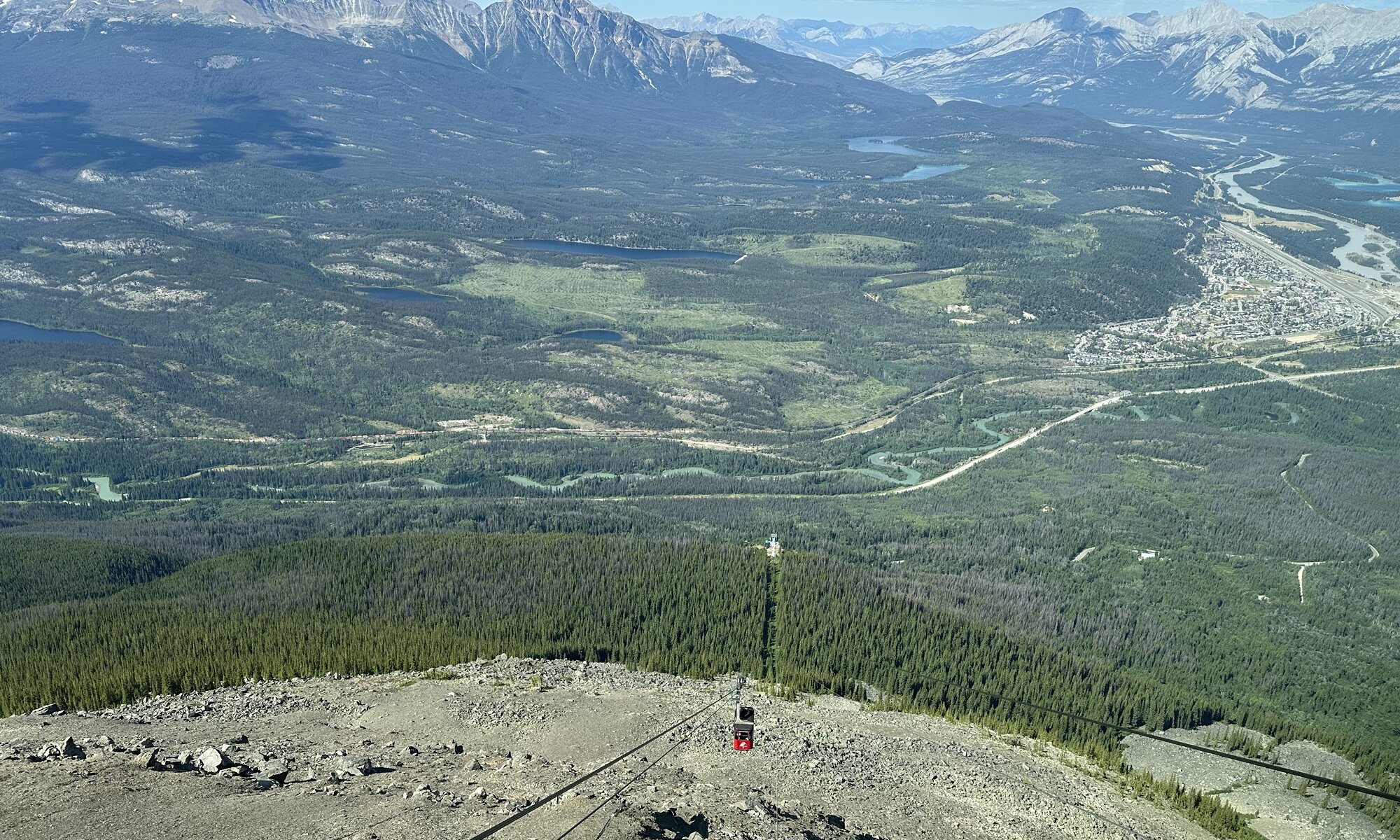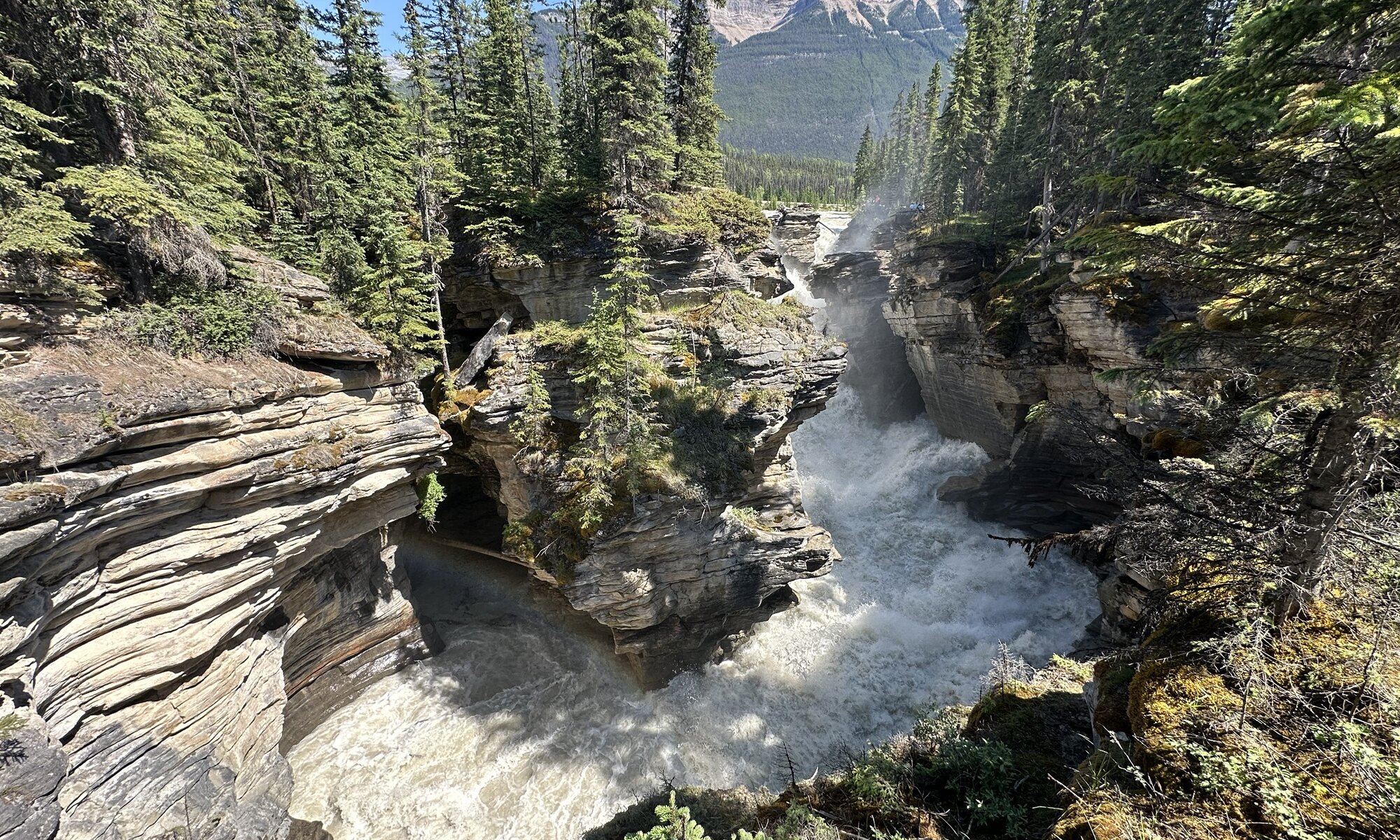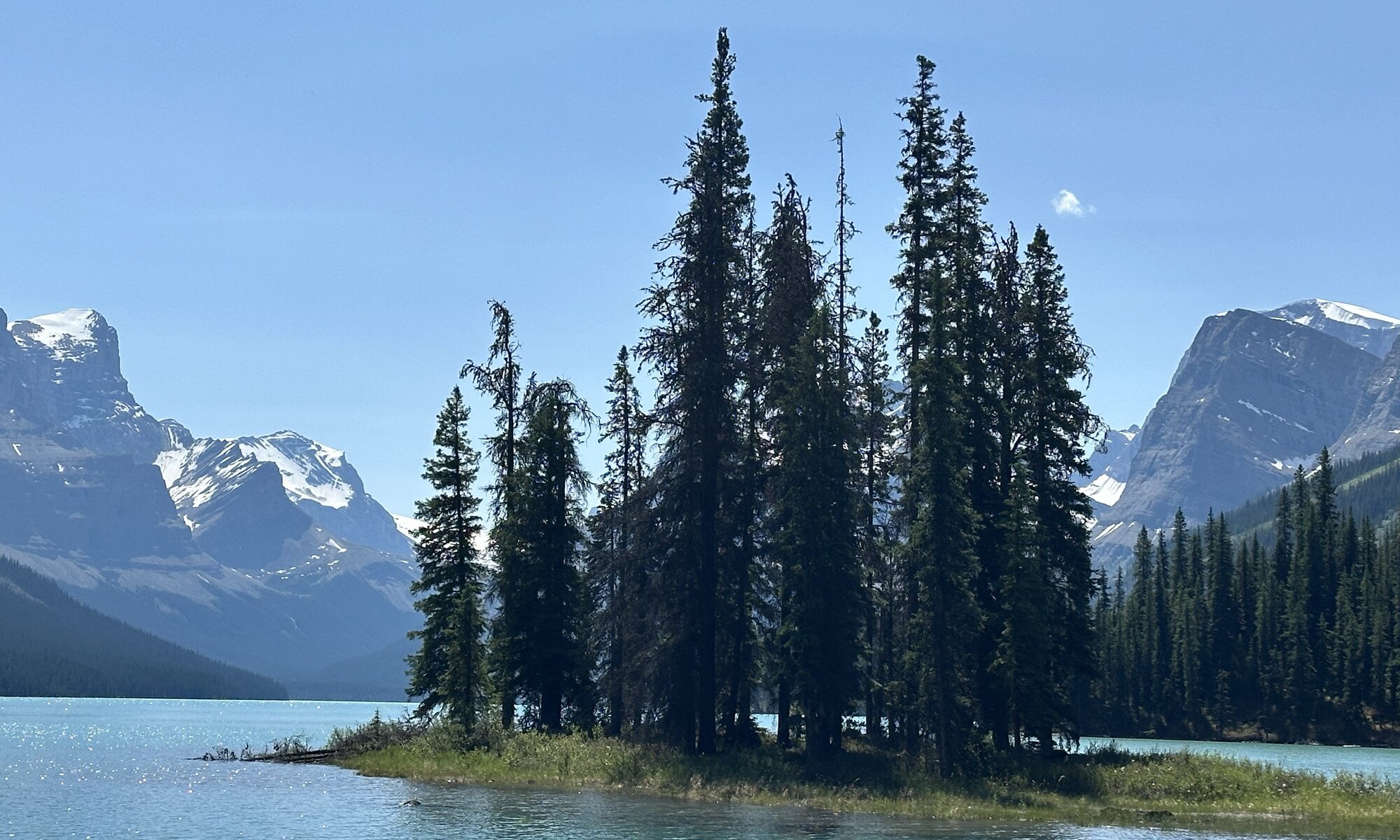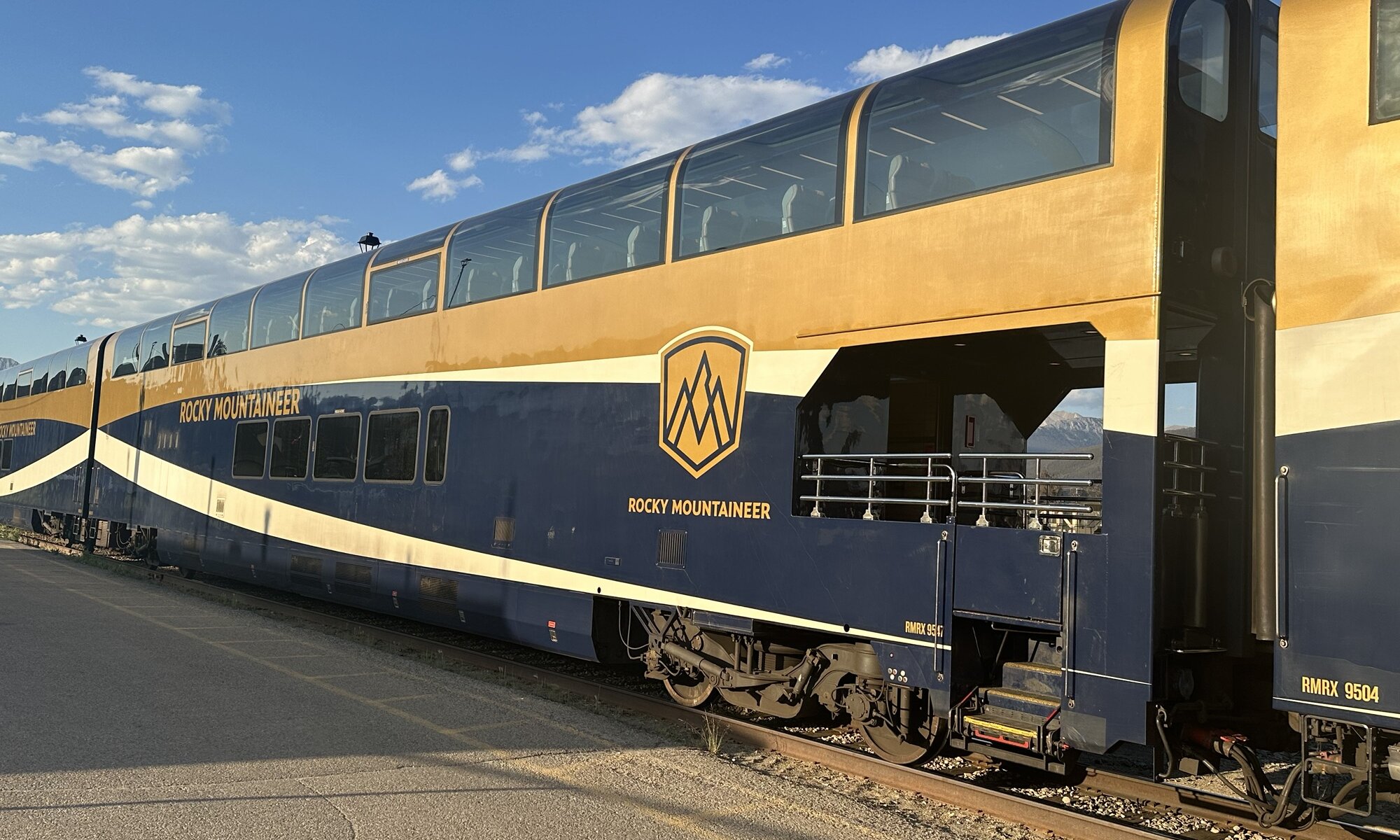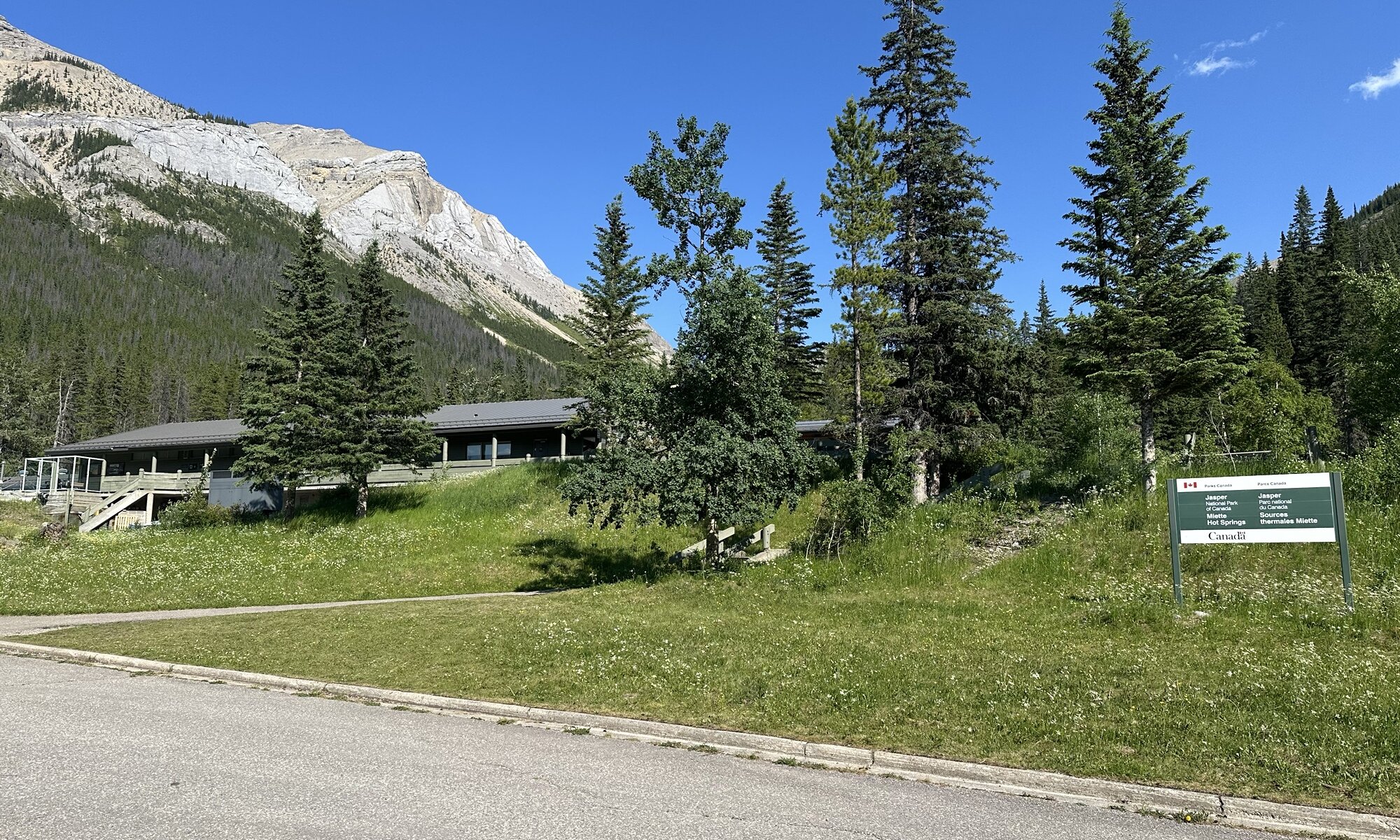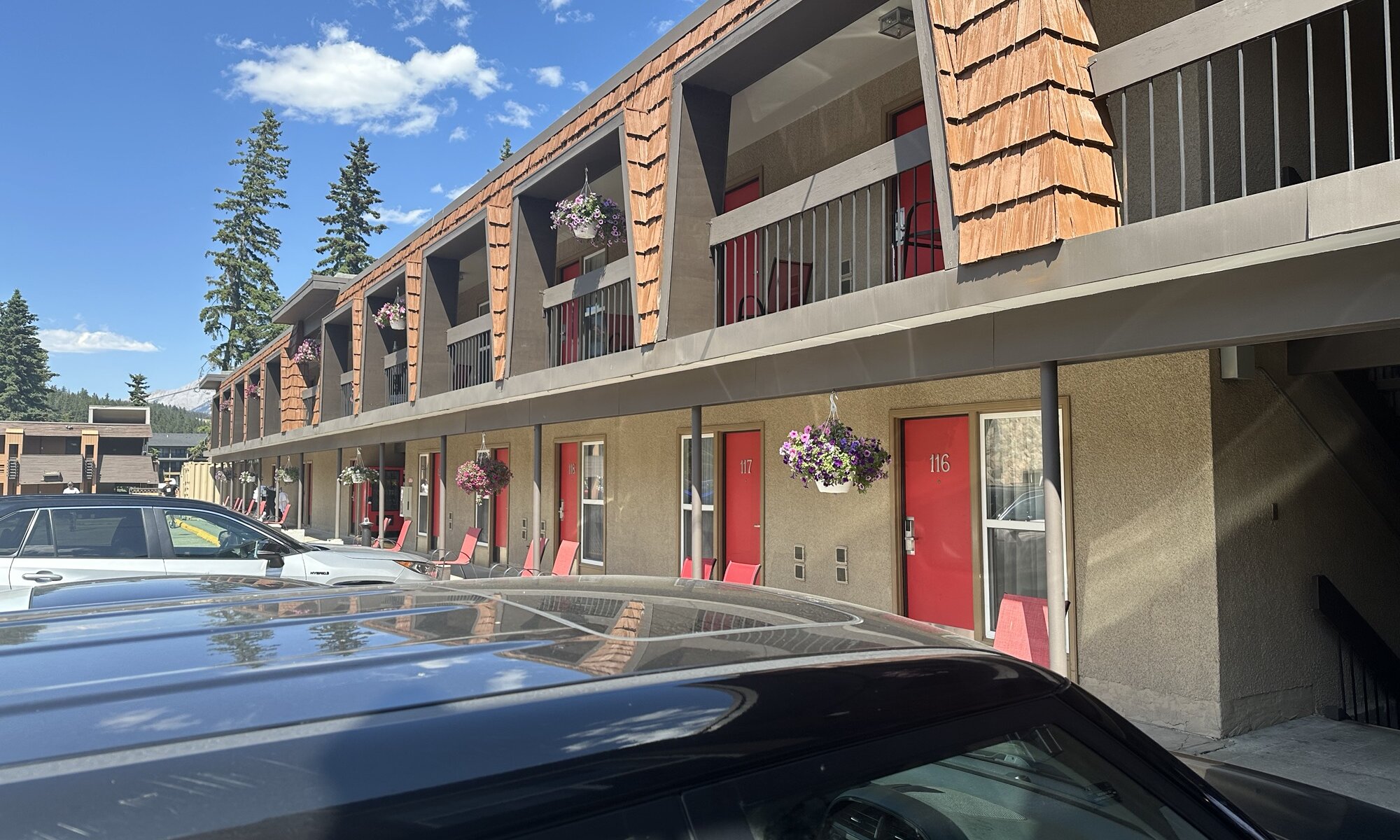Turquoise ice-cold water forming a lake between forests and mountains of the Banff National Park, that’s Peyto Lake – maybe the most beautiful lake I’ve ever seen. It is fed by the glaciers surrounding it and its color is special because of fine rock particles (‘glacial flour’) that are carried into the lake. It is named after trapper Bill Peyto who was active in this region in the 19th century.
Continue reading “Peyto Lake”Athabasca glacier
The Icefields Parkway leading through the Canadian Rocky Mountains fulfills everything that the name promises. Between high mountains you can find six main glaciers like the Athabasca glacier all belonging to the Columbia Icefield. And while we had a heatwave with 41 degrees Celsius the temperature there dropped to 16 degrees. Due to global warming it has retracted continuously and lost about half of its mass. Along the way to the glacier tongue you can see how far it reached until which year.
Continue reading “Athabasca glacier”SkyTram
The Jasper SkyTram is the highest and longest aerial tramway in Canada, offering visitors breathtaking panoramic views of Jasper National Park from the summit of Whistlers Mountain. The tram ascends to an elevation of 2,263 meters, where visitors can step out onto a scenic boardwalk or hike to the true summit for 360-degree views of the surrounding mountain ranges, glacial valleys, and pristine lakes. The cabins of the tram are rather narrow, the entire system was build in the German city of Saarbrücken.
Continue reading “SkyTram”Athabasca falls
Just 55 kilometers south of Jasper and directly next to the Icefields Parkway you can find the Athabasca Falls – a breathtaking natural spectacle that captivates visitors with its raw power and stunning beauty. It only has a height of 24 meters, but the waterfalls has cut deep into the rocks at the Canadian Rocky Mountains and can become truly powerful throughout the year.
Continue reading “Athabasca falls”Spirit island
In the heart of Jasper National Park, Maligne Lake is a crown jewel of the Canadian Rockies, attracting visitors with its stunning beauty and serene atmosphere. At the center of this natural wonder lies Spirit Island, a tiny landmass that has become one of the most photographed locations in Canada, if not the world. Spirit Island’s fame among photographers can be traced back to a single, pivotal moment in the 1940s. Kodak, the renowned film company, sent photographer Peter Gales on a mission to capture images that would promote their color film.
Continue reading “Spirit island”Rocky Mountaineer
While travelling through the Canadian Rocky Mountains you’ll see a lot of railway tracks and if you’re lucky you can also spot a special train that takes tourists from city to city: The Rocky Mountaineer is a world-renowned luxury train that offers an unforgettable journey through the breathtaking landscapes of Western Canada and the Rocky Mountains. Unlike traditional rail travel, the Rocky Mountaineer operates exclusively during the daytime, ensuring that passengers never miss a moment of the towering peaks, rushing rivers, and pristine wilderness outside their panoramic windows. The train features glass-domed coaches, allowing for unobstructed views of glaciers, waterfalls, and wildlife such as bears, elk, and bald eagles.
Continue reading “Rocky Mountaineer”Jasper brewery
Jasper is a city in the heart of the Canadian Rockies and a charming town surrounded by stunning mountain landscapes, crystal-clear lakes, and an abundance of wildlife. Known for its outdoor activities, Jasper attracts visitors year-round for hiking, skiing, wildlife viewing, and stargazing, with the park being a UNESCO World Heritage site. In addition to its natural beauty, Jasper offers a cozy, small-town vibe with unique local businesses, including the Jasper Brewing Company.
Continue reading “Jasper brewery”Miette Hot Springs
Looking for a warm bath while enjoying great views? Miette Hot Springs (located in Jasper National Park) is one of the hottest mineral springs in the Canadian Rockies, with water temperatures reaching up to 54°C at the source. The springs have a rich history, with Indigenous peoples using the waters for centuries for their therapeutic properties. In the early 1900s, the hot springs became a popular destination for tourists, and the current pool facility was built in the 1980s, offering visitors a chance to relax in the healing waters while surrounded by breathtaking mountain views.
Continue reading “Miette Hot Springs”Rocky Mountains
The Canadian Rocky Mountains are a stunning and iconic mountain range that stretches across the western provinces of British Columbia and Alberta, offering some of the most breathtaking landscapes in North America. Known for their rugged peaks, crystal-clear lakes, expansive glaciers, and deep valleys, the Rockies are a paradise for nature lovers, outdoor adventurers, and photographers alike.
Continue reading “Rocky Mountains”Tonquin Inn
Jasper is a nice little city in the Canadian Rocky Mountains and it is mostly lined up at the main road, the Connaught Drive which is located in parallel to the massively used railway tracks (I’ve seldomly seen such long trains) and the Yellowhead Highway. At the northern end of Jasper you’ll find the Tonquin Inn which was my very first North-American style motel: with two levels and parking directly in front of your room door. It is a bit old-fashioned but it was a very pleasant stay with everything available in the close-by city center.
Continue reading “Tonquin Inn”
